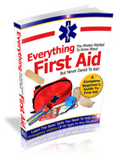Welcome to lacerations Guide
Plastic Surgeons Devices To Close Lacerations Article
 To bookmark this article for further reading, click here.
To bookmark this article for further reading, click here.
Postpartum Vagina Lacerations: Instructions For Vaginal Health
Quite often women who have birthed a baby will develop small postpartum vagina lacerations, as well as lacerations to the surrounding tissues of the perineum.
The vagina is asked to stretch wide enough for the head and shoulders of an infant to pass through, which are the widest parts of the infant. In the beginning, usually the labor progresses slowly, and the cervix thins out and stretches over the baby’s head.
without ever incurring a single tear, but women incur fairly bothersome postpartum vagina lacerations.
The practice of creating a larger opening through the surgical cutting of the perineum, called an episiotomy, was once routinely done to prevent postpartum vagina lacerations; however, the episiotomy is not as common a procedure anymore because the postpartum vagina lacerations heal much faster than the episiotomy.
The treatment for the minor lacerations that occur during childbirth is simply to keep the area clean, and avoid friction. It is advised to clean the perineal area with warm water and blot dry.
The area will heal on its own.
If a woman has an episiotomy, general post partum care is very similar to what is stated for postpartum vagina lacerations. Keep the area clean and dry. Be sure not to wipe the area, but to blot it only.
Watch the surgical area for signs of inflammation. There is quite a bit of pain from the site of an episiotomy, because a layer of muscle has been cut. It is important to follow doctor’s orders regarding postpartum care.
In regards to postpartum vagina lacerations, it is not advised to resume sexual activity for at least 6 weeks after delivery, or until you are given permission by your doctor. Having sex before you are completely healed can reopen the small postpartum vagina lacerations; and can also cause pain and irritation at the site of the episiotomy if there was one done.
Besides reopening postpartum vagina lacerations, a major concern about having sex too soon is that the cervix stays open for a few weeks after delivery. There is a concern that the open cervix is an avenue for bacteria to enter into the womb.
After the baby is born, the placenta is delivered. The separation of the placenta from the inside of the womb is like an open sore, and this area could become infected if sexual activity resumed too quickly.
For the fear of pain, most women will not want to engage in sexual activity for the first few weeks after childbirth, especially if there was an episiotomy. All pain is usually gone by the 5th or 6th week.
In six weeks the vagina is healed, the womb has returned to a near pre-pregnancy size, the inner lining has healed and the cervix has closed.
It normally doesn’t take a full six weeks to be safe to have sex, but the physician usually advises this to be sure there is no threat of infection or reopening a vaginal tear or laceration.


